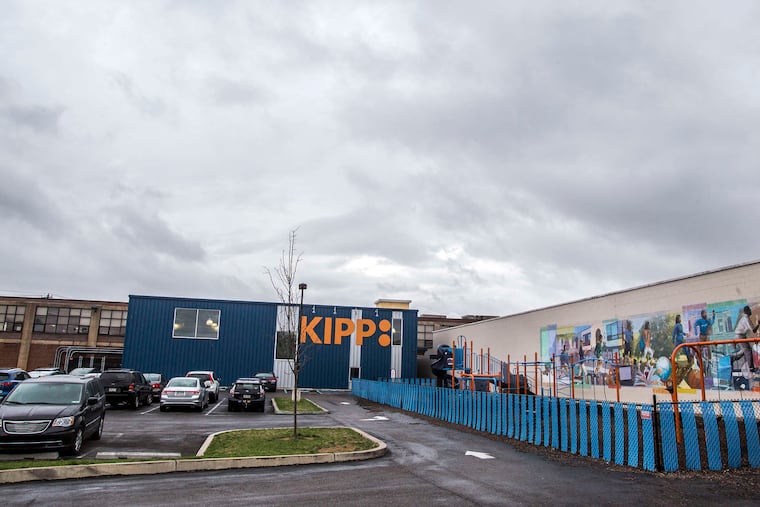I spent a year and a half studying a ‘no-excuses’ charter school. This is what I saw. | Opinion
Tough discipline has had mixed results.

Charter schools are 30 years old as of 2021, and the contentious debate about their place in American society continues.
To better understand what happens at charter schools, I spent a year and a half at a particular type that takes a “no-excuses” approach toward education. My research was conducted 2012 through 2013, but these practices remain prevalent in charters today. The Philly region has had no-excuses schools, including KIPP Philadelphia.
The no-excuses model is one of the most celebrated and controversial education reform models for raising student achievement among Black and Latino students. Charters, which are public schools of choice that are independently managed, show comparable achievement to traditional public schools. No-excuses charters produce much stronger test-score gains and have been heralded as successes, receiving millions of dollars in foundation support. At the same time, large charter networks like KIPP and Noble in recent years have acknowledged the wrongfulness of their disciplinary approaches and repudiated the no-excuses approach.
Here are 10 striking things that I observed at the school where I spent 18 months.
1. Teachers let nothing slide
Teachers at no-excuses schools “sweat the small stuff.” The long list of infractions I observed included: not following directions, making unnecessary noise, and putting one’s head down on a desk.
Students on average received one infraction every three days, resulting in detention, loss of privileges like field trips, and “bench” — a punishment in which students had to wear a special yellow shirt and could not talk to their classmates or participate in gym.
2. Teachers constantly explained the ‘why’
Teachers were encouraged to explain the “why” of infractions so students would understand the rationale behind the unbending rules. Why did students receive detention for arriving one minute late? Because supposedly it helped them develop time-management skills. College applications would not be accepted if they were one minute late, they claimed.
3. Students developed distorted ideas about college
Students formed an impression of college as very strict. One alumna was surprised at the freedom afforded to her in college. Accustomed to a system of rewards and consequences, she struggled with turning in essays for class because the teacher did not grade them. When the term ended and she had to turn in a portfolio of all her work, she found herself playing catch-up. She received a C in the class.
» READ MORE: ‘Stubborn inequity’: 6 in 10 Philly kids still attend low-performing schools, report says
4. School was stressful
Because teachers constantly narrated expectations for behavior and scanned classrooms for compliance, students felt under surveillance. One mother said she kept her daughter home for two weeks because her daughter could not handle the pressure of being set up as a positive example for her classmates.
5. The school intentionally recruited novice teachers
No-excuses schools hire young, energetic, mission-aligned teachers. According to the human resources team, the school had two key criteria for recruiting teachers: coachability and mission fit. The school was less interested in hiring professionals with specialized skills and knowledge. Instead, the school sought teachers who they thought would be more open and responsive to the school’s direction and intensive coaching.
6. Teacher turnover was high
The rallying cry at the school I observed was “Making the School a Better Place to Work.” Half the teachers had left the previous year. Teacher turnover in no-excuses charter schools can range from 20% to 35% nationally, about twice the annual turnover rates in traditional urban schools.
7. Maximizing instructional time had its drawbacks
Procedures as simple as handing back papers or entering the classroom were streamlined to save minutes and seconds for instruction. This left little informal time for teachers to slow down and get to know the students.
8. School order was fragile
School staff members were reluctant to ease up on school discipline because they observed how a small change in procedure altered the school culture.
When the school invited an adventure-based learning group to lead a few activities, students were found to have difficulty adjusting back after being in a less structured environment.
» READ MORE: Wolf revives push to change charter school funding
9. One size does not fit all
No-excuses schools target a select group of students and families willing and able to comply with the demanding expectations. In the initial summer visit made to the homes of all newly admitted students, school staff reviewed a five-page contract between families and the school detailing the school’s stringent expectations. They explicitly told families the school “is not for everyone.”
10. Teachers and students creatively adapted
Still, teachers found ways to adjust school practices to better fit their own styles. They used humor and took time to build relationships with students outside of school. Students also engaged in minor acts of resistance. They erased names off the infraction board, or wore multicolored socks when the school required solid-colored socks.
One of the original visions for charter schools was to create spaces for teachers to experiment with innovative practices and to create schools reflecting local cultures and needs. Instead, no-excuses charters employ a carefully maintained structure that limits the autonomy of teachers and students, with the costs of these structures becoming apparent. Change in these schools is happening but may not be quick or easy. No-excuses schools might do well to reflect on and revisit founding charter principles.
Joanne W. Golann is Assistant Professor of Public Policy and Education at Vanderbilt University and first wrote this piece for The Conversation.